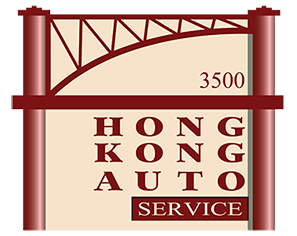What you need to know about your “Low Tire Pressure” warning light
For those of us who dread long, cold and dreary Chicago winters, the mid-February thaw we had was a sunny and joyful reprieve.
But sudden and extreme swings in the air temperature can also trigger a dashboard warning light that many of us might not recognize: A glowing orange or red “Low Tire Pressure” indicator.
The good news is two-fold: First, your car is doing exactly what it’s supposed to. And second, the fix is about as easy and low cost as it gets.
 Low Tire Pressure Light: Here’s What Is Happening
Low Tire Pressure Light: Here’s What Is Happening
- All vehicles manufactured after Sept. 1, 2007 are equipped with a Tire Pressure Monitoring System (TPMS). Federal law mandated the TPMS for safety reasons, and the system alerts you when the air in one or more of your tires drops beneath a pre-set specification.
- For every 10 degrees the outside air temperature changes, your tire pressure can fluctuate about 1 psi. If you or your auto shop last set the tire pressure in mid February when it was 68 degrees, guess what it drops to when winter returns and overnight temperatures fall into the 20s? Your tire pressure could be changing 4-5 psi while you’re getting your Zzzzzs. This could lead to a glowing orange greeting from your dashboard in the morning.
What Should You Do?
- Check and adjust your tire pressure in the morning before you drive more than a few miles and before the heat of the day begins to falsely bump the psi back up. (TireRack.com offers an in-depth explanation about the sun and daytime temperatures affecting your tire pressure.) But if you’re leaving for work in the dark and cold, the last thing you may want to do is deal with dirty valve stems and coin-operated air machines. If you drive by Hong Kong Auto Service on your way to or from work, we’re here 7 am to 6 pm and would be happy to adjust your tire pressure for you.
- Consult your owner’s manual for instructions on resetting the Low Tire light. In some vehicles, your TPMS light will turn itself off once you’ve properly inflated the tires and you’ve driven a few miles. In others, you may need to hit a button or go through a menu option to reset the light. If you’re not sure or if your light is persistent, Hong Kong Auto Service can help. Stop by anytime. We’ll make sure the system is operating properly, and we can reset the light for you. In most cases, we can reset the light in just a couple of minutes. In other cases, we may have to go through a series of steps, including meeting specific driving conditions. There may be a nominal fee involved in those instances. But don’t delay because underinflated tires mean lower fuel economy, reduced safety and faster tire wear.
Why is TPMS Necessary?
- Vehicles driving on tires underinflated by more than 25 percent are three times more likely to be involved in a crash related to tire problems, according to a study by the National Highway Traffic Safety Administration (NHTSA).
- It’s better for gas consumption and tire wear. If you tires do not have enough air pressure, your vehicle will have reduced safety and handling, will use more gas and will wear out the tires faster.
- TPMS is effective. Another study by NHTSA showed that vehicles with TPMS are 55.6 percent less likely to have a severely underinflated tires than vehicles without TPMS.
Have a question about your tires, TPMS or how to check your tire pressure? Don’t hesitate to call Hong Kong Auto Service at 847-251-0300.
